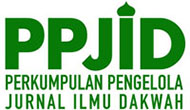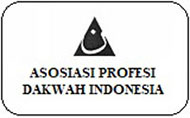One Mosque Five Pillars: Diversity of Preaching and Social Cohesion in Central Java
Abstract
This article explores social cohesion among Muslim groups in the village of Sragen, which is home to five distinct groups: NU, Muhammadiyah, MTA, LDII, and Salafi, as well as some individuals identified as abangan. Masjid Rohmat serves as the focal point for religious events, such as Eid al-Fitr and Eid al-Adha. This research is based on field research conducted in 2023. The data was then analyzed using a qualitative approach. This research has found, despite their differing interpretations and practices of faith, the residents of this village coexist peacefully and harmoniously. Key factors that contribute to this social cohesion include family ties and community activities. Many villagers share familial connections, even if they hold different religious affiliations. For instance, one mother regularly participates in Yaasin and tahlil gatherings, while her son is a member of LDII. In another household, the husband is affiliated with Muhammadiyah, while the wife attends MTA public congregations. Additionally, community members collaborate on various social activities, transcending their religious differences.
Keywords
Full Text:
PDFReferences
Al-Ansi, A. M., Sulistyaningsih, T., Wibowo, M. A., & Garad, A. (2023). The Islamic Organizations in Indonesia ‘Muhammadiyah and NU’: Social Perspective Explanation. Dirasat: Human and Social Sciences, 50(5), 550–564. https://doi.org/10.35516/hum.v50i5.1124
Arifianto, A. R. (2020). Rising Islamism and the Struggle for Islamic Authority in Post- Reformasi Indonesia. TRaNS: Trans -Regional and -National Studies of Southeast Asia, 8(1), 37–50. https://doi.org/10.1017/trn.2019.10
Bunyamin, Firdaus, H., & Lismawati. (n.d.). KOHESI SOSIAL UMAT ISLAM ANTAR JAMAAH MASJID AR-RAHIM DAN AL-IKHLAS DI KAMPUNG AMBON. Prosiding Seminar Nasional Penguatan Riset Dan Luarannya Sebagai Budaya Akademik Di Perguruan Tinggi Memasuki Era 5.0.
Chaplin, C. (2018). Salafi activism and the promotion of a modern muslim identity: Evolving mediums of da’wa amongst Yogyakartan university students. South East Asia Research, 26(1), 3–20. https://doi.org/10.1177/0967828X17752414
Chaplin, C. (2025). Religious authority in the urban mosque: Islamic activism and the ethics of “being present” in Eastern Indonesia. American Ethnologist, 52(2), 159–170. https://doi.org/10.1111/amet.13388
Chisari, M. (2021). The Return of Australian Values in the Australian Citizenship Test. In A. W. Ata (Ed.), Muslim Minorities and Social Cohesion: Cultural Fragmentation in the West (pp. 46–58). Routledge.
Fadholi, M. S. (2014). Multikulturalisme dalam Bingkai Ukhuwah Islamiyah. Idea Press.
Fealy, G., & Bush, R. (2014). The Political Decline of Traditional Ulama in Indonesia. Asian Journal of Social Science, 42(5), 536–560. https://doi.org/10.1163/15685314-04205004
Halliday, M. A. K., & Hasan, R. (2014). Cohesion in English. Routledge. https://doi.org/10.4324/9781315836010
Hamidah, H. (2017). AL-UKHUWAH AL-IJTIMA’IYAH WA AL-INSANIYAH. Jurnal THEOLOGIA, 23(2), 448–466. https://doi.org/10.21580/teo.2012.23.2.1678
Handayani, S. (2012). Kohesi Sosial antara Tenaga Pendidik dan Tenaga Kependidikan. Universitas Muhammadiyah Malang .
Hidayah, S. N., & Ramadhany, A. (2022). Islamic Education and Social Cohesion: Situating Pesantren in the Island of the Gods. In M. Sukmajati (Ed.), Education, Conflict Histories and Social Cohesion-Building in Indonesia (pp. 233–271). Penerbit PolGov.
Ikhwan, I., Fatia, A., Suratman, J., Ramadhan, M. N., & Alfaiz, A. (2022). The dialectic of fiqh understanding and the female Imam-Khatib tradition in Balingka, West Sumatra, Indonesia. Indonesian Journal of Islam and Muslim Societies, 12(2), 313–339. https://doi.org/10.18326/ijims.v12i2.313-339
Jubba, H., Awang, J., Qodir, Z., Hannani, & Pabbajah, M. (2022). The contestation between conservative and moderate Muslims in promoting Islamic moderatism in Indonesia. Cogent Social Sciences, 8(1). https://doi.org/10.1080/23311886.2022.2116162
Julian Millie. (2012). Oratorical Innovation and Audience Heterogeneity in Islamic West Java. Indonesia, 93, 123. https://doi.org/10.5728/indonesia.93.0123
Junarti, Mardika, I. H., Alhabshi, S. M., & Amirsyah. (2023). The Muhammadiyah Waqf Organization: Prospects and Challenges (pp. 511–522). https://doi.org/10.1007/978-3-031-27860-0_47
Kahmad, D. S. (2000). Sosiologi Agama. Pustaka Setia.
Lussier, D. N. (2019). Mosques, Churches, and Civic Skill Opportunities in Indonesia. Journal for the Scientific Study of Religion, 58(2), 415–438. https://doi.org/10.1111/jssr.12589
Masduki, A., Niu, P., & Triyono, A. (2021). Media and Religion: Study of Anti-Shi’a Propaganda in Yogyakarta. Komunikator, 13(1). https://doi.org/10.18196/jkm.131048
McKay, J. E., Mangunjaya, F. M., Dinata, Y., Harrop, S. R., & Khalid, F. (2014). Practise what you preach: A faith-based approach to conservation in Indonesia. ORYX, 48(1), 23–29. https://doi.org/10.1017/S0030605313001087
Millie, J. (2017). The public metaculture of islamic preaching. In The Monologic Imagination (pp. 231–249). https://doi.org/10.1093/acprof:oso/9780190652807.003.0012
Millie, J., Barton, G., Hindasah, L., & Moriyama, M. (2014). Post-authoritarian diversity in Indonesia’s state-owned mosques: A manakiban case study. Journal of Southeast Asian Studies, 45(2), 194–213. https://doi.org/10.1017/S002246341400006X
Muhammadiyah, H. (2015). The Relation between Religion and State in Indonesia. Asian Social Science, 11(28), 98. https://doi.org/10.5539/ass.v11n28p98
Musahadi. (2018). The Role of Mosque and Khutba in Socio-Economic Development of Indonesia: Lessons from Kauman Mosque in Central Java. Global Journal al Thaqafah, 8(2), 55–66. https://doi.org/10.7187/GJAT122018-5
Nata, A. (2008). Kajian Tematik Al-qur’an Tentang Kemasyarakatan (A. Nata, Ed.). Angkasa.
Noveliana, E., Bahari, Y., & Imran, I. (2021). Analisis Peran Tokoh Masyarakat Dalam Mempertahankan Harmonisasi Kehidupan Masyarakat Di Desa Batu Mas. Jurnal Pendidikan Dan Pembelajaran Khatulistiwa, 10(6), 2–10.
Nurjanah, N. (2024). SERVING AS A ROLE MODEL: Historical Perspectives on Muhammadiyah’s Multicultural Da‘wa Towards Chinese Indonesians, 1960–1970. JOURNAL OF INDONESIAN ISLAM, 18(2), 558. https://doi.org/10.15642/JIIS.2024.18.2.558-578
Pusat Pembinaan dan Pengembangan Bahasa Depdikbud. (n.d.). Kamus Umum Bahasa Indonesia. Balai Pustaka.
Qodir, Z. (2024). Contemporary Islamic Thought in Indonesia 2010-2023: Contested Public Sphere. Insight Turkey, 26(2), 299–318. https://doi.org/10.25253/99.2024262.15
Ridwan, W. (2022). The Dynamics of Islamic Mass Organisations in Preventing Violent Extremism (pp. 215–231). https://doi.org/10.1007/978-981-16-2032-4_10
Rijal, S. (2020). Performing Arab saints and marketing the prophet: Habaib and Islamic markets in contemporary Indonesia. Archipel, 99, 189–213. https://doi.org/10.4000/ARCHIPEL.1719
Rohmah, U. (2016). Interaksi Sosial Warga NU dan Muhammadiyah. Jurnal Analisis Konflik Agama, 21(4), 21–45.
Rosidi, I. (2021). Da’wah and politics among Muslim preachers in contemporary Indonesia. Intellectual Discourse, 29(1), 35–52. https://www.scopus.com/inward/record.uri?eid=2-s2.0-85109614271&partnerID=40&md5=0a3fa9b4df969f10f3c4ce31b0487221
Setiarto, R. H. B., & Herlina, V. T. (2024). Ketupat: a culinary heritage of Indonesia in Eid Al-Fitr tradition. Journal of Ethnic Foods, 11(1), 45. https://doi.org/10.1186/s42779-024-00259-x
Shihab, M. Q. (1995). Wawasan al-Qur’an: Tafsir Mudlu’i atas Pelbagai Persoalan Umat. Mizan.
Slama, M. (2017). A subtle economy of time: Social media and the transformation of Indonesia’s Islamic preacher economy. Economic Anthropology, 4(1), 94–106. https://doi.org/10.1002/sea2.12075
Thoyib I M. (2002). Islam dan Pranata Sosial Kemasyarakatan. Remaja Rosda Karya.
Yusuf, K., & Putrie, Y. E. (2022). The Linguistic Landscape of Mosques in Indonesia: Materiality and Identity Representation. International Journal of Society, Culture and Language, 10(3), 1–20. https://doi.org/10.22034/ijscl.2022.550006.2570
DOI: http://dx.doi.org/10.24014/jdr.v36i1.34147
Refbacks
- There are currently no refbacks.

This work is licensed under a Creative Commons Attribution-ShareAlike 4.0 International License.
Editorial Office:
2nd Floor, Building of Faculty of Da'wah and Communication, Universitas Islam Negeri Sultan Syarif Kasim Riau. Jl. HR Soebrantas Km 15, Simpangbaru, Tampan, Pekanbaru
Email : jurnalrisalah@uin-suska.ac.id

This work is licensed under a Creative Commons Attribution-ShareAlike 4.0 International License.














